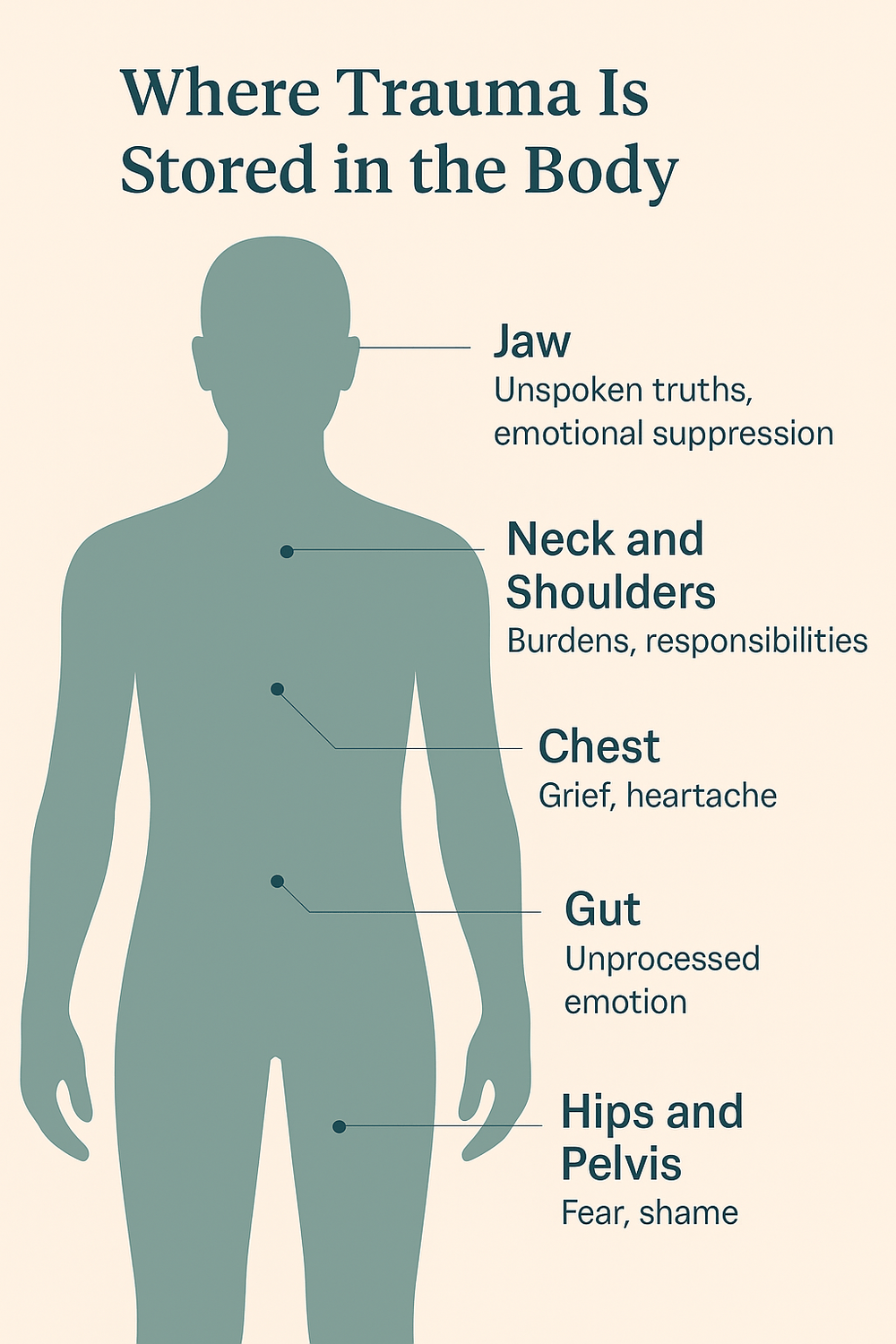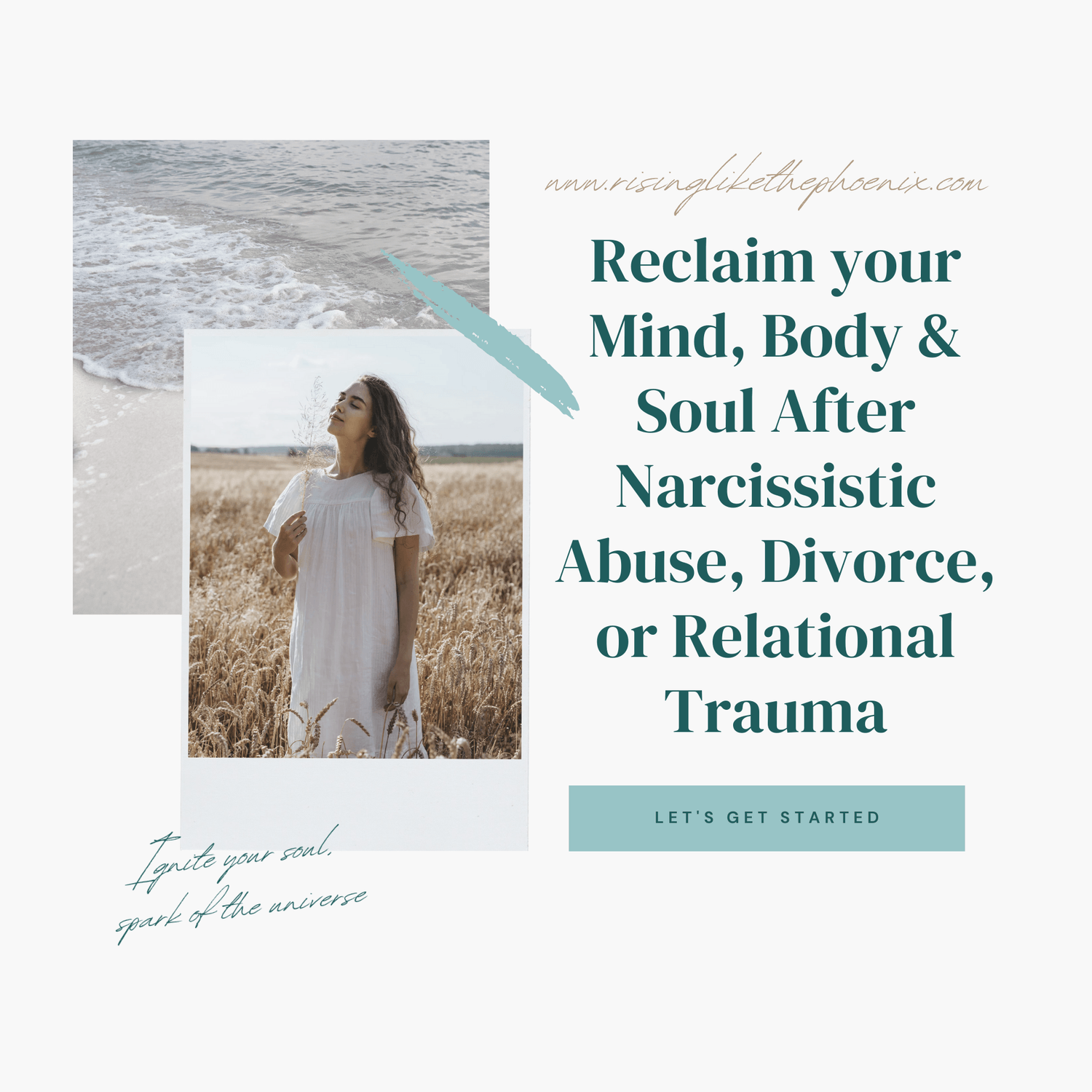The Connection Between Trauma and Physical Health in Healing from Narcissistic Abuse
Emotional wounds don’t just live in your heart or mind, they live in your body, too.
When we think about trauma, especially from narcissistic abuse, gaslighting, or toxic relationships, we often focus on the psychological effects. But what about the toll these experiences take on your physical well-being? Your body remembers what your mind tries to forget. And in many cases, long after the toxic relationship ends, the body continues to carry the burden.
In this blog, we’ll explore the deep connection between emotional trauma and physical health, how trauma lives in the body, and what steps you can take to restore your balance and reclaim your vitality.
What Is Emotional Trauma, and How Does It Show Up in the Body?
Trauma is not defined by the event itself, but by how your body and nervous system respond to it.
For many survivors of narcissistic abuse or other forms of relationship trauma, the emotional pain is ongoing and layered, filled with betrayal, confusion, fear, and chronic invalidation. Over time, these stressors create real physiological changes. Your body becomes stuck in a constant fight-flight-freeze loop. This isn’t just “in your head”,it’s in your nervous system, your immune system, your hormones, and your sleep cycle.
Common Physical Symptoms of Emotional Trauma
If you’ve ever felt “off” or unwell without a clear diagnosis, consider whether these symptoms might be rooted in emotional trauma:
Chronic fatigue or adrenal burnout
Digestive issues (IBS, ulcers, nausea)
Autoimmune conditions
Muscle tension, especially in shoulders, neck, and jaw
Insomnia or restless sleep
Hormonal imbalances
Migraines or tension headaches
Unexplained body aches
Weight fluctuation
Increased inflammation or pain sensitivity
Where Trauma is Stored in the Body
Trauma often anchors itself in the fascia, the web-like connective tissue that wraps around every muscle, bone, nerve, and organ. When trauma isn’t released, the fascia tightens like shrink-wrap, creating chronic tension, pain, and emotional stagnation.
Some common trauma storage areas include:
Jaw: often tight from unspoken truths or emotional suppression
Neck and shoulders: carry burdens and responsibilities, especially for over-functioners
Hips and pelvis: known as emotional “junk drawers” of trauma, often hold fear and shame
Gut: where unprocessed emotion can manifest as IBS, bloating, or nausea
Chest: tightness here can reflect grief, heartache, or feeling unsafe to open up
These are not just symbolic locations,they correspond with nerve endings and fascia that literally remember trauma.

Why Narcissistic Abuse Is Especially Damaging to the Body
Narcissistic abuse is unique in that it’s insidious, chronic, and psychologically destabilizing. You’re often gaslit into doubting your perceptions, silenced when you express needs, and love-bombed only to be devalued again. This creates a biochemical rollercoaster that leaves your body in survival mode.
Gaslighting Effects on Physical Health
Gaslighting, in particular, erodes self-trust and creates a state of internal chaos.
Your nervous system no longer knows what’s real or safe. This perpetual state of uncertainty:
Triggers cortisol spikes (stress hormone)
Disrupts sleep cycles
Alters digestion
Dampens immune response
Fuels chronic inflammation
Over time, this wears down your body’s natural resilience. What starts as emotional harm becomes physical illness.
The Science Behind the Mind-Body Connection
The emerging field of psychoneuroimmunology studies how trauma impacts the immune system and brain-body connection. In short: your emotions aren’t separate from your biology, they shape it.
How Trauma Alters Your Brain and Body
Amygdala (fear center): becomes overactive, heightening your threat detection
Hippocampus (memory center): may shrink, impairing your ability to process new emotional experiences
Prefrontal cortex (logic/reason): becomes less active, making it hard to make decisions or trust yourself
Vagus nerve (rest and digest): becomes dysregulated, interfering with digestion, sleep, and mood
These changes can explain why you may feel exhausted, foggy, or hypersensitive, even after the abusive relationship ends. You’re not broken.
You’re healing from something real.
Steps to Begin Healing Physically from Emotional Trauma
Restoring physical health after trauma is part of the healing journey. Here’s where to begin:
1. Create a Safe Environment
Safety is the foundation of healing. This means eliminating or distancing yourself from toxic contacts, yes, even if they’re family. Your nervous system needs peace, not more confusion.
Recovery step: Block or mute narcissistic exes or toxic people on social media. Create emotional and physical distance.
2. Practice Somatic Awareness
Tune in to your body’s cues. Where are you holding tension? What triggers discomfort? Start practicing mindfulness of sensation - this brings your nervous system back online.
Self-care tip: Try body scans, grounding exercises, or gentle movement like yoga or tai chi.

3. Focus on Nourishment
Trauma often disrupts appetite, leading to overeating, under-eating, or nutrient deficiencies. Reframe food as medicine for your healing body.
Self-care tip: Eat whole, unprocessed foods. Stay hydrated. Consider magnesium and adaptogenic herbs (consult your provider).
4. Sleep as Sacred
Sleep is where your body repairs. Trauma often disrupts this process. You may struggle with nightmares, insomnia, or waking in panic.
Self-care tip: Create a sleep sanctuary. Use calming rituals, avoid screens before bed, and explore guided meditations or breathing exercises.
5. Release Stored Emotions
The body stores trauma in tight muscles and shallow breathing. Emotional release isn’t just crying, it’s movement, sound, and breath.
Recovery step: Explore somatic therapy, breathwork, dance, or even gentle shaking (a natural way animals release trauma).
6. Get Trauma-Informed Support
Working with a trauma-informed therapist or coach helps you untangle your experiences in a safe space. This support can be life-changing.
Self-care tip: Look for practitioners who understand narcissistic abuse recovery, not just general mental health.
7. Rebuild Self-Worth from the Inside Out
Healing from emotional trauma means relearning who you are. You are not the damaged version the narcissist projected. You are worthy, resilient, and whole.
Recovery step: Affirm your truth daily. Use a journal to track your growth, celebrate boundaries, and honor your body’s healing process.
Myofascial Release: A Somatic Tool for Deep Healing
One powerful technique to physically release trauma stored in the fascia is myofascial release, a gentle, hands-on therapy that targets restrictions in connective tissue.
You can work with a licensed therapist or explore self-myofascial release at home using tools like:
Foam rollers
Lacrosse or therapy balls
Yoga blocks
Hands and breath (for manual or intuitive release)
Gentle release tips:
Start slow and listen to your body
Breathe deeply during pressure holds
Focus on known trauma zones like the hips, jaw, or heart center
Use guided videos or trauma-informed somatic practitioners
This work isn’t about force,it’s about trust, permission, and compassion.

Long-Term Restoration: It’s a Journey, Not a Deadline
True healing doesn’t happen overnight. Think of it as a return flight home, one that includes turbulence, unexpected detours, and rest breaks. But each small step you take, each time you honor your needs, say no, or rest without guilt,you are restoring your body’s trust in safety.
And that is the heart of healing.
Final Thoughts: Your Body Deserves to Heal
You’ve been through more than most people can imagine. The scars may not always be visible, but they are real. Your body has carried the weight of trauma. Now, let it carry the truth of your healing.
You’re not broken, you’re becoming.
Frequently Asked Questions
Healing timelines vary widely, but many people begin to feel physical relief within months of consistent emotional and somatic support. Full healing may take years, and that’s okay. You’re rebuilding from the inside out.
While trauma isn’t the only factor, chronic stress and trauma have been linked to immune dysregulation, which can contribute to autoimmune conditions. A trauma-informed approach to health can make a difference.
Somatic therapies (like EMDR, SE, breathwork, or myofascial release) are especially helpful for physical symptoms rooted in emotional trauma. Always work with a qualified practitioner.
Shame is a tool of abusers. Your body has done what it needed to survive. Show yourself compassion. Your worth has nothing to do with your weight, energy levels, or how much you get done.
5 Steps to Reclaim Your Life
A practical guide to reclaiming your confidence, setting boundaries, and moving forward—without second-guessing yourself.

Hi, I’m Diane – and I’m so glad you’re here
Diane is the author of A Girlfriend’s Guide to the Other Side: Reclaim Your Mind, Body, and Soul After Narcissistic Abuse, Divorce, or Relational Trauma.
After surviving the wreckage of a controlling relationship that stripped her identity, she turned her pain into purpose. Through her book, course, and community, Diane now guides women on the journey of rebuilding self-worth, setting healthy boundaries, and reclaiming their lives.
Her mission is simple: to remind every woman that healing is possible, and that your future can be brighter than your past.
Categories
Rise Weekly Newsletter
Because healing isn’t just about surviving, it’s about rising. Rise Weekly delivers empowering insights, gentle reminders, and soulful tools to help you reclaim your strength, set powerful boundaries, and rebuild a life that feels like you. If you're ready to rise above trauma and step into your next chapter with clarity and courage - this is your space.
Created by © Suzanne Startari with systeme.io





